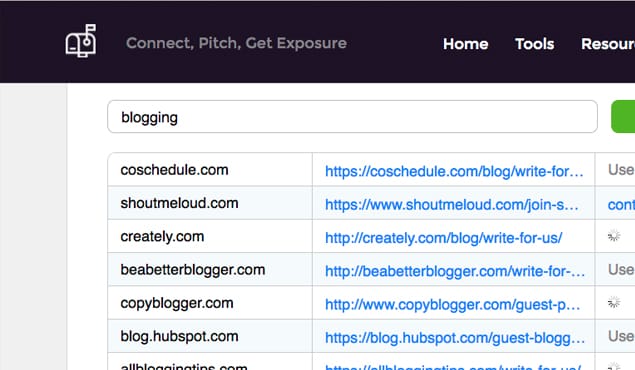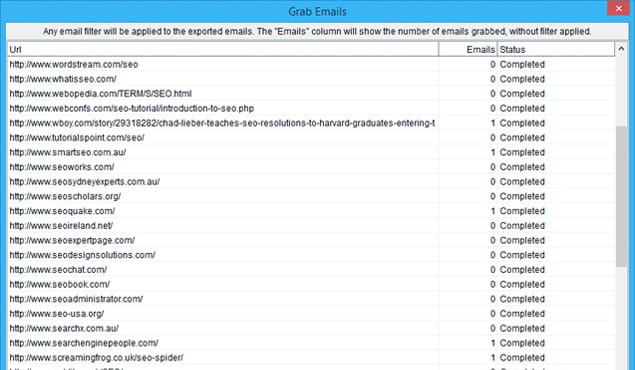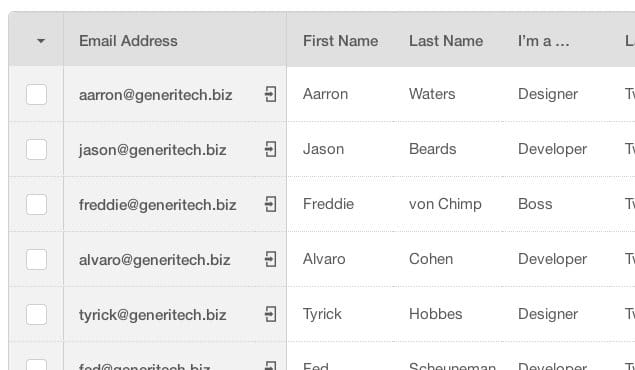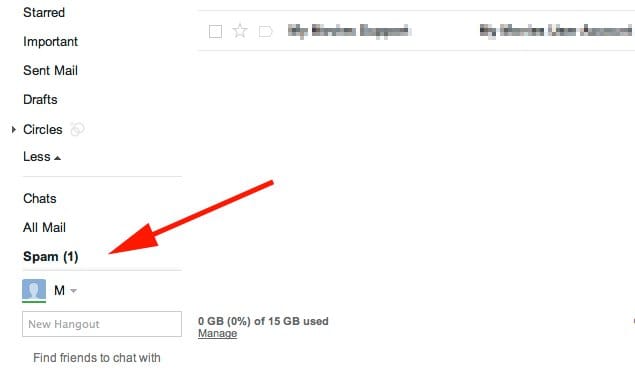Guest posting is an undeniably powerful strategy, so it stands to reason that you’d want to get as many guest posts on as many sites as possible. Yet, if you follow a typical guest posting strategy, you’re spending a lot of time on building a connection and submitting pitches on the off chance that an editor feels good that day and decides to let you in for publication. It can take weeks or even months of trying with some sites, and some – I’m looking at you, Forbes – are going to be steep walls even then.
If you’re anything like me, and like most other marketers, you’re constantly looking for ways to streamline your processes. You want to make things faster, easier, simpler, cheaper; you want to growth hack your way to the top.
Can you do something like that with guest posting, or at least with soliciting guest post opportunities?
The Mass Guest Post Solicitation Strategy
This strategy is initially presented without judgment. I’ll analyze it for it’s effectiveness next, but first, let’s learn what it is and how it works.
The idea is pretty simple: you want to get feelers into as many sites as possible, as quickly as possible, and work from there. Here’s what a sample process might look like.
Step 1: Use Google liberally to find as many sites as possible that accept guest posts. Look up phrases like “submit a pitch” or “submit guest post” or “write for us” and see what websites come up. At the same time, search for “sites that accept guest posts” to find websites that list sites that accept posts.
Essentially, you’re going to be using this to build a spreadsheet of as many sites as possible. Quantity is important here, not quality; you’re not looking for the top of the line opportunities, you’re just looking for every possible opportunity.
Step 2: Do a rough once-over pass on your list. Check out the sites and see if they would, at all, be valuable to your site if you posted on them. For example, I probably wouldn’t want to write a guest post for a beauty or fashion site; I have nothing to contribute to that niche, the audience would have no idea who I am, and they would have no reason to visit my site. Google wouldn’t even give the link much weight at all, because of their link relevance rules. They would be more likely to classify it as spam under their link schemes guidelines.
The goal of this pass is not to gather information or make judgments as to the quality of the sites, beyond a simple “is this spam? y/n” question. It’s to weed out the sites that would be valueless or potentially harmful to post on.
Step 3: Use a tool like Scrapebox to run through your list of websites and find contact information for the editors, owners, or anyone in a position of authority. Basically, rather than doing it all manually, you’re using a tool to harvest contact information. Simple, easy, and probably mostly accurate.
Step 4: Craft up a generic pitch. You want to say who you are, say what your site is about, and talk a little about the kinds of content you write. Don’t be specific about a pitch you want to write, and don’t for the love of god try to offer a link for a link, or a post for a post. That kind of spam pitch is what got Matt Cutts to issue his famous Death of Guest Posting blog post.
In fact, just read that post. Up at the top you see a message quoted that works almost entirely what you should be producing, except for one thing: the bolded parts. Asking for links, offering compensation, and other such incentives are against the Google guidelines and are likely to get your pitch ignored. It doesn’t matter if it’s a mass solicitation or one carefully crafted message to one site; don’t do it.
If you can use a template message and customize it for the names of the sites, do so, but be careful that you don’t use the wrong name or get the wrong fields filled in, or worse, send a template without the fields filled in. That would be an auto-ignore.
Step 5: Send your generic pitch to everyone on your list. This is where things get tricky; you need to be careful not to trip flags and send too many unsolicited messages at once from the same account. That kind of behavior can be tracked by Google via Gmail. It won’t be punished immediately – it’s kind of the way newsletters work, after all – but if a lot of people decide to mark your message as spam, your domain / server IP as a whole can be marked as spam. This means none of your emails will get through to anyone using Gmail, or any other mail client that took such an action, even if it’s legitimate newsletters or customer billing.
Also, mass unsolicited email communication can be very close to spam, and spam is actually illegal under the can-spam act. Google that one for more information, it’s all dense legal definitions of communications and solicitation.
Step 6: Wait for positive replies. Anyone who responds in a way that indicates they would be interested in a guest post from you is someone to follow up with. This is where you get more personal; you look at their site, you figure out what kind of content you could make and how it would fit, and you start discussing pitches. Go through the usual process for putting together a guest post for any site you would post for, and make sure it’s something unique. You’re not syndicating posts here, you can’t just send the same post to everyone.
Now, ideally, by the end of this process, you have a whole lot of guest posts on a whole lot of sites, and you didn’t have to spend a ton of time putting together individual communications. The trick was getting something that looked individual, but was really a mass email.
The Perils of Mass Solicitation
Now that you’ve read the process, maybe you’re rearing to go and willing to try it out right now. Before you do, though, you should use some critical thinking skills and figure out what’s wrong with it. Here, I’ll help.
1: Google has explicitly called it out as a bad technique. That Matt Cutts blog post put the fear of God into a huge number of marketers for years, and guest posting is still fighting a stigma that just won’t go away. Guest posting done properly is still a good technique, but you really need to go about it the right way. Frankly, when Google calls out your technique explicitly as something they don’t want to see, you probably shouldn’t do it, especially not years later when it should be common knowledge to avoid it.
2: Site owners tend to get a ton of solicitation messages every week, and yours won’t stand out. The hardest part of getting new guest post opportunities is building up a connection so that they know who you are and feel better about accepting a post.
See, when I send out a guest post pitch, I’ve taken my time and laid my groundwork first. I don’t cold-call sites, I start by reading them. I find content of theirs I like and I link to it in blog posts. I comment on a few of their more recent posts, when they’re posted. I connect with them on social media and I subtly poke at them to see if they’re receptive and if they’ll link back to me or follow me in return. I generally become part of their audience, their community.
All of that is so that when I say “hey, by the way, I have a site and am kind of an expert in this subject, want me to write a post for your site?” they A) recognize me around and B) are more receptive to the post. After all, networking is probably one of the most important skills you can have, and trying a mass solicitation scheme is just trying to avoid that skill.
3: You might be contacting the wrong person or the wrong email address. Scrapebox and tools like it are very good at harvesting email addresses off a site for you. What they’er not very good at is making sure the address is the right one you want. You’ll get a lot of the right addresses, but you’ll also get a lot of incorrect addresses. You don’t want to accidentally send your guest post submission to someone who commented on a blog post with their email address, do you?
Possibly the worst outcome of this is sending your guest post solicitation to someone higher up in the company who is very sensitive to spam. I’ve seen it happen before, where someone sending out a pitch sends it to the wrong person, and that person sends a memo down saying to blacklist them for not following protocol. Not everyone can be Arianna Huffington back when she would hook people up to contribute to HuffPo.
4: The site might have a clear process outlined that you’re ignoring. If they have a web page dedicated to how to write for them, and they have a series of boxes they want you to fill out with all the details to generate a message to their contact email in the format they prefer, what do you think they’re going to do with an unsolicited message sent to the wrong email? I personally would discard it, probably without reading it, and I might mark it as spam. It shows the user can’t read directions or is trying to circumvent the process, neither of which is a good thing for a site that is probably busy managing everything they can with one too few employees.
5: You’ll get a very low response rate since you have no prior engagement with the target sites. Maybe one in fifty, one in a hundred, or one in a thousand sites will respond favorably to your request, depending largely on how well you’re able to craft a compelling pitch. You’re not really saving yourself time and effort, when all is said and done.
Also, you have statistics. Fast Company published a study done on cold emails – the kind you’re sending with this technique – and found an extremely low response rate even for what they expected. You can read about that here.
A Verdict
So, the question is, does mass guest post solicitation work? It can work in small numbers on low quality sites, but since you aren’t going to get on any sites worth mentioning with bulk outreach, the answer is a resounding no. You might get a couple of contacts from sending out a few hundred messages, but you might also get blacklisted by email providers, and one of them is more likely than the other.
You can spend more time on each individual contact, more energy researching them and personalizing your contact, and it will have an immensely better success rate. We’re not talking fractions of a percent here, we’re talking the difference between failure and success.
Mass solicitation lacks everything that modern, good guest posting requires. Plus, there are thousands of other bloggers out there trying the mass spam methods, so your message just ends up one more out of a sea of noise in the inbox. Don’t do it, don’t bother trying, and spend your time on something more important. Aim for quality sites worth writing for.
 ContentPowered.com
ContentPowered.com








